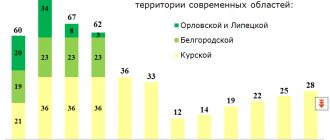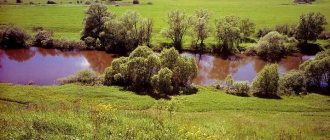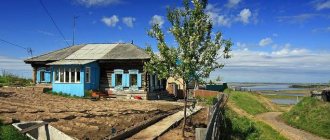Official portal Zabaykalsky Krai
Date of formation of the region
On March 1, 2008, in accordance with the Federal Constitutional Law of July 21, 2007 No. 5-FKZ “On the formation of a new subject of the Russian Federation within the Russian Federation as a result of the unification of the Chita region and the Aginsky Buryat Autonomous Okrug,” the Trans-Baikal Territory was formed.
The Aginsky Buryat Okrug became part of the region as an administrative-territorial unit with a special status.
Distance from Chita to Moscow - 6074 km Time difference with Moscow - +6 hours
Territory The area of the territory is 431.5 thousand km2 (2.6% of the territory of Russia). The length from west to east is 1000 km and from north to south – 900 km.
Administrative center is the city of Chita
Population (According to the 2010 All-Russian Population Census)
Population – 1,107.1 thousand people.
Population density – 2.6 people.
per 1 km2, Large cities
- Chita (323.9 thousand people)
- Krasnokamensk (55.7 thousand people)
National composition
- Russians – 89.9%;
- Buryats – 6.8%;
- Ukrainians – 0.6%
- other nationalities – 2.7%.
Regional government bodies
Executive body - Government of the Trans-Baikal Territory, Governor of the Trans-Baikal Territory - Osipov A.M.
Legislative (representative) body - Legislative Assembly of the Trans-Baikal Territory, Chairman of the Legislative Assembly - Likhanov I.D.
Historical reference
In ancient times, the Transbaikal region was a kind of “corridor” along which the steppe tribes of Mongolia and northern taiga hunters passed. In the 13th century, Transbaikalia became part of the empire of Genghis Khan.
Before joining the Russian state, the region was dependent on the Mongol and Manchu khans. Russian service people appeared on this territory in the middle of the 17th century.
In 1653, they founded a number of settlements: Irgensky, Nerchinsky forts and Ingondinsky winter quarters, which formed Chita.
Industrial development of the territory began in the 18th century. In 1700, the Nerchinsk silver-lead plant was built, and by the end of the 18th century. 9 factories were already operating here, incl. Petrovsky iron foundry and ironworks.
Tin and gold mining were actively developing. In the second half of the 19th century. Nerchinsk factories fell into disrepair.
In the XVIII – XIX centuries. the territory of Transbaikalia is a place of hard labor and exile, including political exile.
After the Amur region was annexed to Russia in 1851, Chita was the center of the Transbaikal region (1851-1920), the capital of the Far Eastern Republic (1920-1922), the province (1923-1926), the Chita district (1926-1930), the Chita region (1937-2008) and Trans-Baikal Territory (since 2008).
Geographical position
The region is located in Transbaikalia. Borders: in the west - with the Republic of Buryatia, in the northwest - with the Irkutsk region, in the northeast - with the Republic of Sakha (Yakutia), in the east - with the Amur region, in the southeast of the region there is the border of the Russian Federation with the People's Republic of China and Mongolia. The total length of the state border is 1920.1 km.
Natural conditions (relief features)
The relief of the territory of the Trans-Baikal Territory is formed by medium-high mountains, in some places reaching 1700-1900 m. The largest ones include the Daursky, Kodar and Yablonovy ridges. The highest point is the BAM peak at 3073 m above sea level.
The Great World Divide passes through the territory of the Trans-Baikal Territory, where the large rivers of Siberia - the Yenisei and Amur Lena - originate.
Natural resources
- Mineral resources
The mineral resource base consists of proven reserves of ferrous, non-ferrous, precious and rare metals, fluorspar, hard and brown coal, semi-precious stones, mineral waters and raw materials for the production of building materials.
The subsoil contains 42% of Russia's proven fluorspar reserves, 31% of zirconium, 21% of copper, 28% of molybdenum, 18% of titanium, 13% of silver, 12% of lead, gold, tungsten, tin, lithium, zinc, coal and iron ores.
The predicted mineral resource potential is: titanium dioxide, nickel, cobalt, lead, antimony, mercury, germanium, synnyrites, fluorite, zeolites. In addition, there are a number of deposits of semiprecious stone raw materials, perlites, graphite, refractory and refractory clays, magnesite, and there are prerequisites for identifying deposits of diamonds and platinum.
- Forest resources
The total area of the forest fund of the Trans-Baikal Territory is 32.6 million hectares, the total reserve of forest wood is 2.7 billion m3. Recreational resources, tourism
There are 64 unique natural monuments in Transbaikalia, including glaciers of the Kodar ridge, thermal springs, lakes, extinct volcanoes, etc.
The lake is considered a tourist Mecca. Ares at the great watershed. Transbaikalia is rich in sources of mineral waters used for medicinal purposes - the well-known health resorts “Uksakhai” and “Zymka” were created on their basis.
In total, the region has 12 resorts and sanatoriums, including Darasun, Kuka, Molokovka, Yarmarovka.
In the area of the Alkhanai mountain range, the Alkhanai National Park was opened in 1999 - a sacred place of worship for Buddhists.
How did the region appear?
Trans-Baikal Territory can be called a relatively young region. The first people appeared here no more than 35 thousand years ago. The first settlements were discovered near the current capital.
The formation of the Trans-Baikal Territory began with the unification of the Buryat Autonomous Okrug and the Chita Region in 2007. The heads of local government sent an official letter to the President of the Russian Federation. The official date of creation of the region is March 11, 2007. On this day a referendum was held. The people had to express their opinion on the unification of several administrative units into the Trans-Baikal Territory. The capital of the region was chosen a little later.
Today Transbaikalia is a fairly large region inhabited by people of various nationalities. According to the latest population census, the total population of the Trans-Baikal Territory is 1,087,479 people. The most populated is the central part of the region. But in the northern part the population is quite weak.
Development of the region
Like the rest of Russia, the Trans-Baikal Territory has good economic indicators. A huge amount of black soil makes it possible to develop agriculture well. Most of the products consumed by the local population are produced in Transbaikalia.
Thanks to a significant number of rivers and lakes, the region has enormous hydropower potential. But, unfortunately, very little work has been done in this area to date. Much emphasis is placed on other areas of the economy. The excellent development of the Trans-Baikal Territory is due to large reserves of valuable precious metals, copper, tin, molybdenum, and polymetallic ores. The main base of the Russian nuclear industry is also located in the Trans-Baikal Territory.
The development of the region is also characterized by a good educational base. Zabaikalsk (Zabaykalsky Krai) is famous for its three higher educational institutions. More than 7,000 students can study here at the same time. This is the pride of not only the region, but the entire Russian Federation. After all, university graduates receive a truly high-quality education thanks to a good teaching staff. Much attention is paid to the sports development of youth.
Chita
Several regions are united into the Trans-Baikal Territory. They have the same capital. The city of Chita with a population of more than 300 thousand people was chosen as the center of the region. The settlement got its name from the river that flows nearby. Chita is still the real pride of Transbaikalia today.
The capital has a sharply continental climate with a characteristic temperature regime. In winter, the average temperature here is about 25 degrees Celsius below zero. Summers are warm and humid. Temperatures rarely rise above 20 degrees Celsius. The warmest period in Chita lasts only 77 days.
The capital is located in the Irkutsk time zone. The offset relative to Moscow time is 5 hours.
The government of the Trans-Baikal Territory is located in Chita. And local government is represented by the City District Duma, as well as the local city administration. The head of the administration is the mayor, who is elected by the population.
Chita is not just the center of Transbaikalia, but a real cultural capital. There are a huge number of museums and theaters here. A visitor can get great pleasure walking along the streets. The ancient architecture of the city is impressive. And in spring and summer, Chita hosts many festivals that attract tourists not only from Russia, but also from other neighboring countries.
Setevoy city, Trans-Baikal Territory
This is a virtual city created to optimize the educational process in the region. The idea is based on the introduction of the latest technologies in the field of education. Virtual communication with teachers is available on the website; parents can view their student’s electronic diary and receive information about attendance. Almost all educational institutions of the region are represented on the “Network City” website. Also through this site you can find out the schedule of classes and events that will take place in the class or school.
Population of Trans-Baikal Territory
The number of residents in 2021, as mentioned above, was 1,072,806 people. The average population density is 2.48 people/sq. km, and the share of urban residents is 68%. The northern part of the region is the least populated.
The number of residents is gradually decreasing, which is associated with low birth rates and population outflow. The mortality rate is also high. In terms of life expectancy, it ranks one of the last places in Russia.
Cities and districts of the Trans-Baikal Territory are located along river valleys.
Geography, relief, flora and fauna
The relief is dominated by medium-altitude mountains - the Yablonovy, Chersky, Borschovochny, Daursky and others ridges; and the intermountain basins separating them. In the north, the mountains rise to a height of 3072 m (Kodar ridge). In the south there is the vast Prionon Plain.
The unique flora and fauna of the Trans-Baikal National Park, on the territory of which the largest seal rookery on Lake Baikal and noisy bird colonies are located, invariably arouse interest among scientists; the park is especially popular. In the park, you can find such rare bird species listed in the Red Book as whooper swan, black crane and black stork, peregrine falcon and white-tailed eagle.
Religion
In terms of religion, the Transbaikal region can be called quite diverse. Today, traditional beliefs of ancient peoples still exist here - shamanism, totemism and fetishism. Some indigenous people practice Islam and Judaism.
With the advent of the Russian-speaking population on the territory of modern Transbaikalia in the 17th century, Orthodoxy came here. The first Church of the Resurrection was built in 1670. It has survived to this day.
Gurans - the unrecognized people of Transbaikalia
Gurans are famous for their special type of beauty
Gurans are a people born in Transbaikalia
Every modern person perceives his origin at the level of the second or third generation. The most curious ones conduct more detailed research and create a family tree. In fact, in each of us a variety of ethnic groups are mixed. On the territory of Transbaikalia alone, a certain type of local population, based on the Buryat, Evenki and Russian ethnic groups, gradually formed, which is usually called “gurans”. Who are they, the mysterious inhabitants of the “wild steppes” with a sonorous nickname and a difficult fate?
The Gurans were born from a mixture of blood and cultures of the Eastern Slavs who arrived in Transbaikalia and the ancient inhabitants of this region - the peoples of the Mongolian and Tungus-Manchu language groups. The formation of a special people with a Russian language, an oriental appearance and Asian character traits occurred between the mid-18th and mid-19th centuries. During this period, ties with Russia (as the Russian-speaking inhabitants of Siberia called Trans-Ural Russia) were very weak, the Slavic population was small, and the language was strongly influenced by Buryat, Mongolian and Evenki.
Aborigines of Transbaikalia
The indigenous population of the Transbaikal region in the 17th century consisted of nomadic peoples. The main part were Evenks (Tungus), Khori-Buryats and Onon Khamnigans - people who spoke the archaic language of the Mongolian group.
The Transbaikal Khori-Buryats are part of the ancient Khori-Tumat tribe, which returned to their Baikal ancestral home at the turn of the 16th-17th centuries. This is the most wandering tribe of the Buryats. They roamed the Mongolian steppes, the “hills of Manchuria,” and the mountains of the Baikal region. In their wanderings during the era of the Mongol Empire, they reached the Pacific Ocean, but in the end the most freedom-loving part of them returned to Buryatia.
Buryat girls
The Evenks also led a nomadic lifestyle; they lived scattered over a vast area. Their settlement by small clans in the taiga sea subsequently led to the fact that with the influx of the Buryat and then Russian population, there were very few “purebred” Evenks left.
The Onon Khamnigans appeared on the basis of fragments of the Mongol tribes that settled the deserted lands of the former ulus of the Hasarid princes. This feudal domain experienced strong upheavals in the 15th century and the bulk of the Mongols migrated from there to the south. Later, people from other Mongolian tribes arrived there and met there with the Evenks, who began to master horse breeding. Two waves from the south and north united and an alliance of 15 tribes was formed, called Khamnigan.
Evenki women in traditional costumes
The Russians learned about them from the Buryats and Mongols, and since they called the Evenks by the word Khamnigan, they decided that all these 15 tribes were also Evenks, or Tungus. Since then, the concept of “Tungus” in the Russian language has been assigned not only to the Evenks, but also to the Khamnigans, although most of this union consisted of Mongols.
To the north and east of the Khamnigans lived the Daurs, a large Mongol-speaking people. The Daurs were not nomads, they lived sedentary lives, sowed grain, and knew how to build large fortresses. Faced with the Cossacks, they completely abandoned their homeland and went to the Manchus, where they became one of the most educated and privileged tribes. Later, the Daurian prince Gantimur with part of his people fled from the Manchus to Transbaikalia. The Russian authorities entrusted him with the management of the Onon Khamnigans and southern Evenks.
Russia goes to Transbaikalia
In the 17th century, Transbaikalia was annexed to the Russian state. Cossacks and peasants played a huge role in the colonization of the region. The Cossacks, in fact, were the first Russian settlers. They had to conquer and protect the Trans-Baikal land from the raids of nomads, and in the future - protect the borders.
Among the nomads of the Buryats and Evenks, settlements of Russian peasants and Cossacks gradually grew. Gaining a foothold in new territories, the Cossacks built fortresses for defense and outposts to acquire new lands with tributaries to the Russian treasury.
Transbaikal Cossacks
The leading role in the Russian settlement of the region was played by the descendants of the first Cossacks and industrialists who settled in Transbaikalia for permanent residence in the mid-17th century. Among them were: Russians, Belarusians, Ukrainians, Poles. They allowed the Slavic population to develop here.
After the annexation, the government decided that the harsh Transbaikal climate was sufficient punishment for state criminals. Those dissatisfied with the authorities were resettled in Transbaikalia. The worst hard labor in Russia was in Nerch. The Nerchinsk mines were a horror for the criminal element throughout the country. But those who managed to escape from there were famous throughout the underworld.
The Old Believers exiled to Transbaikalia, called “Semeyskie” by the local population, represent one of the interesting ethnic groups of the region. Exiled here in the second half of the 18th century, they brought with them and preserved here bright elements of ancient Russian national culture. One of the fiery inspirers of the Old Believers was the fiery archpriest rebel Avvakum. Their ancestors opposed Nikon's church reform and were subjected to severe persecution and persecution by the government and the official Orthodox Church.
Semeyskiye - Old Believers of Transbaikalia
All these colonists laid the foundation for the future old-timer population; they were called old-timers.
Melting pot of tribes
Due to difficult historical processes in Transbaikalia, a complex interethnic situation has developed. The settlers who lived in the neighborhood intermarried with the local aborigines. This explains the appearance in the everyday vocabulary of the local population of the special term guran, which denotes a person of mixed blood in the fourth generation, who has absorbed the features of the Slavic and indigenous population.
Judging by archival documents, already in the 18th century, Russian settlers in Transbaikalia used the word guran as a self-name or nickname. Then they began to call all those who were born beyond Baikal, or descendants from mixed marriages of Russians with Buryats, Mongols, Evenks, and also with Manchus.
Help EHE Asia . It should be noted that in the neighboring Republic of Buryatia the word guran is not in use. The old-time Russian population here is most often called Siberians, or, in the case of mixed origin, Karyms (from the Buryat khariin “alien”). However, in many regions of the Republic of Buryatia they do not know either the word guran or the word karym, but they use the word shereesnig (in Western Buryatia - khershen) to designate the descendants of the Buryats who were baptized and Russified. Siberian in the southern part of Buryatia is the name of a specific ethnographic group, and not a nickname for any inhabitants of Siberia. Also among the Russian old-timers in the south of Buryatia, the so-called “Mongols” stand out. These are the Russified descendants of the South Selenga Mongol-speaking tribes.
Why did the word Guran become the name of this ethnic group? Transbaikal Cossacks sewed winter hats from the skin of a guran, a male roe deer, preserving the horns. This headdress resembled the head of an animal, and created excellent camouflage when hunting. Long winters contributed to the fact that this characteristic headdress became familiar to the eyes and was deposited in the mind, giving a nickname to an entire ethnic group.
Distinctive features of gurans
The writer Vladimir Rukosuev, himself a Guran, noted the most remarkable features of this people.
“The distinctive feature of the Gurans is their Mongoloid nature. But appearance, nevertheless, is not the only and not the main determining quality of a guran. There are also gurans with a purely European appearance. Either they were not very mixed or acquired the properties of guran as a result of living in this area.
By the way, about the area. It cannot be assumed that all those living in Transbaikalia are Gurans. Even locals. According to my classification, membership in this tribe can only be assigned to carriers of a certain subculture. At first glance this may seem absurd and controversial. I believe that you can become a Guran not only by birth, but as a result of being raised in an environment from an early age, if you find yourself in it from childhood, like Mowgli in a flock.
You can also stop being a guran. I will try to clarify my idea with an example. Mowgli lived with people, adopted their habits and ceased to be a wolf. Like pasta. You can squeeze it out of the tube, but you can’t put it back.”
Transbaikal dialect of Russian language
The Gurans, among other things, have their own dialect, which only they understand. The language is full of speech features characteristic of the dialects of the old-timer population of the region. Significant in the dialect of the Gurans is the loss of vowels from the endings of verbs (“arrive”, “plavat”, “letat”), at the end of adjectives (“chernu”, “krasnu”).
Vladimir Rukosuev gives an example:
- Lonis with his brother on Khalzanka was gushing with elanya in sundala.
In translation:
“Last year in the fall, my cousin and I were riding at a small trot along the mountainside with spruce shoots, together on one horse that had a white stripe on its muzzle.
Help from Ekhe Asia: the Transbaikal word “vsundaloy”, as well as the cognate word “sundalat”, used in the dialects of southern Buryatia, come from the Mongolian sundaldakha (Burn. hundaldakha) “to ride together on one horse.” The participial turn sundaldaad of this verb in local dialects of the Russian language gave “sundalat” and “sundala” (emphasis on the last syllable). The latter also began to be used in the prepositional case with the Russian preposition “in” and came out as “vsundaloy”. An example of the use of the first term: “Tell me the name (i.e. tell them - ed.), let them burn with sundalat, nothing can be done.” Transbaikal khalzanka, meaning a horse with a white stripe on its muzzle, is also a Buryatism from the word khalzan. There used to be many similar words that were included in the Russian dialects and dialects of the Buryat part of Siberia and the Far East.
But outside of their residence, they are embarrassed by their dialect, considering it a sign of lack of education; their children completely lose it.
A more revealing illustration of the unique mentality of the people of Transbaikalia can be seen in manifestations of hospitality, cordiality, ease of communication, and openness. Among the culinary preferences of Transbaikal residents is tea, which has always been in constant demand.
There is an assumption that the popularity of tea is related to the regional position of Transbaikalia - its proximity to China. Russian old-timers became “addicted” to tea back in the 18th century, which was brought from neighboring China. The symbol of tea unites Transbaikal residents at the everyday level. Transbaikal residents still preserve the tradition of tea drinking; it is a whole ritual for them.
Nationality or ethnic group
Who are the Gurans? Nationality or ethnic group? Controversial issue.
According to one theory, as a result of mixing, cross-breeding or interpenetration of several ethnic groups, not only the disappearance of the old one, but also the emergence of a new ethnic group can occur. So, as a result of the merger of such nationalities as the Buryats, Evenks and Russians, a new type of local population appeared. But isn’t this proof that the Gurans are a nationality?
There is no information about such people in any encyclopedia. Guran is designated as a type of local population based on three ethnic groups: Buryat, Evenki and Russian.
Today, modern residents of Transbaikalia tend to consider themselves a special type of Russian, indigenous Transbaikalians. Not all Transbaikal residents have a positive attitude towards the word “guran”. Judging by the reaction of modern Transbaikal residents, one can judge that not everyone understands this term, sometimes it is even perceived negatively. There can be many reasons, and the main one is ignorance of one’s roots and the history of one’s native land.
Zhanna VEDERNIKOVA Photo by Dmitry Golovin. All photographs are provided by the author and are published with his permission.
More on the history of Transbaikalia: the wanderings of the Korean queen - the Onon steppes or the coastal taiga?
Nature in Transbaikalia
The region's topography consists of both mountains and plains. In the northern part of the Trans-Baikal Territory there are many mountains, but in the south the steppe predominates. Forests predominate in mountainous areas. The Department of the Trans-Baikal Territory reports that in 2006 the total forest area was more than 34 thousand hectares. This is 67% of the total area of the entire region. Thanks to the forests, the air in Transbaikalia is clean and fresh. Many resort areas are located in pine forests.
Transbaikalia is also famous for its water resources. The largest rivers include the Shilka, Onon, Khilok, and Argun. But the largest groups of lakes include Torey and Kuando-Chara.
Good mineral resources contribute to the high level of the economy of the Trans-Baikal Territory. The region contains concentrated reserves of silver and copper in large quantities. More than 2% of all-Russian reserves of hard coal are also concentrated in Transbaikalia.








